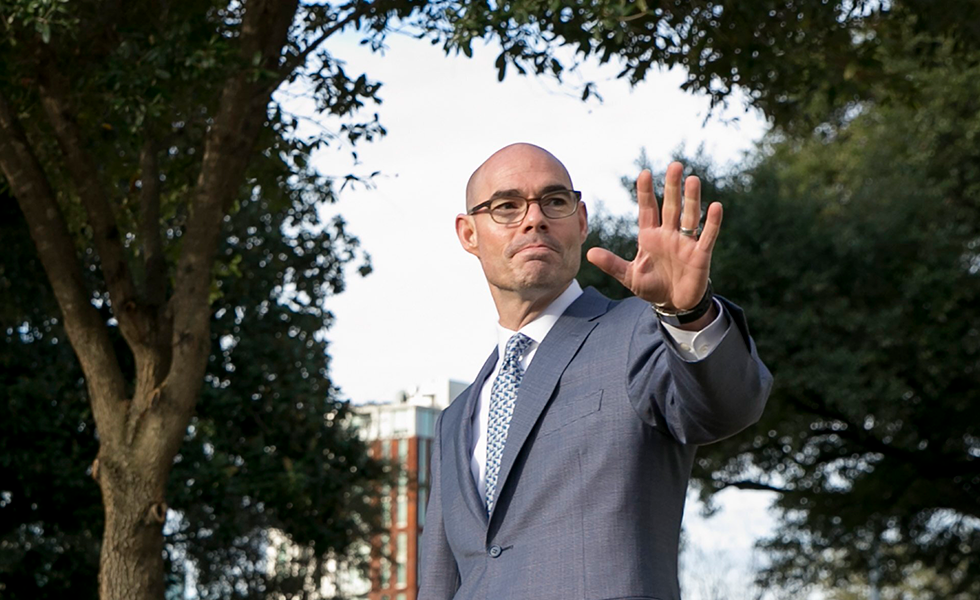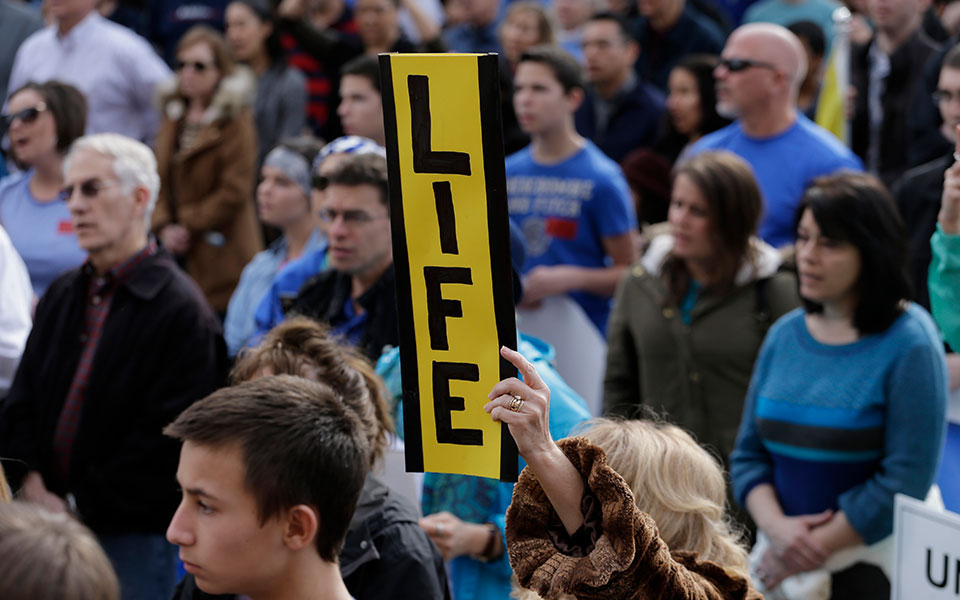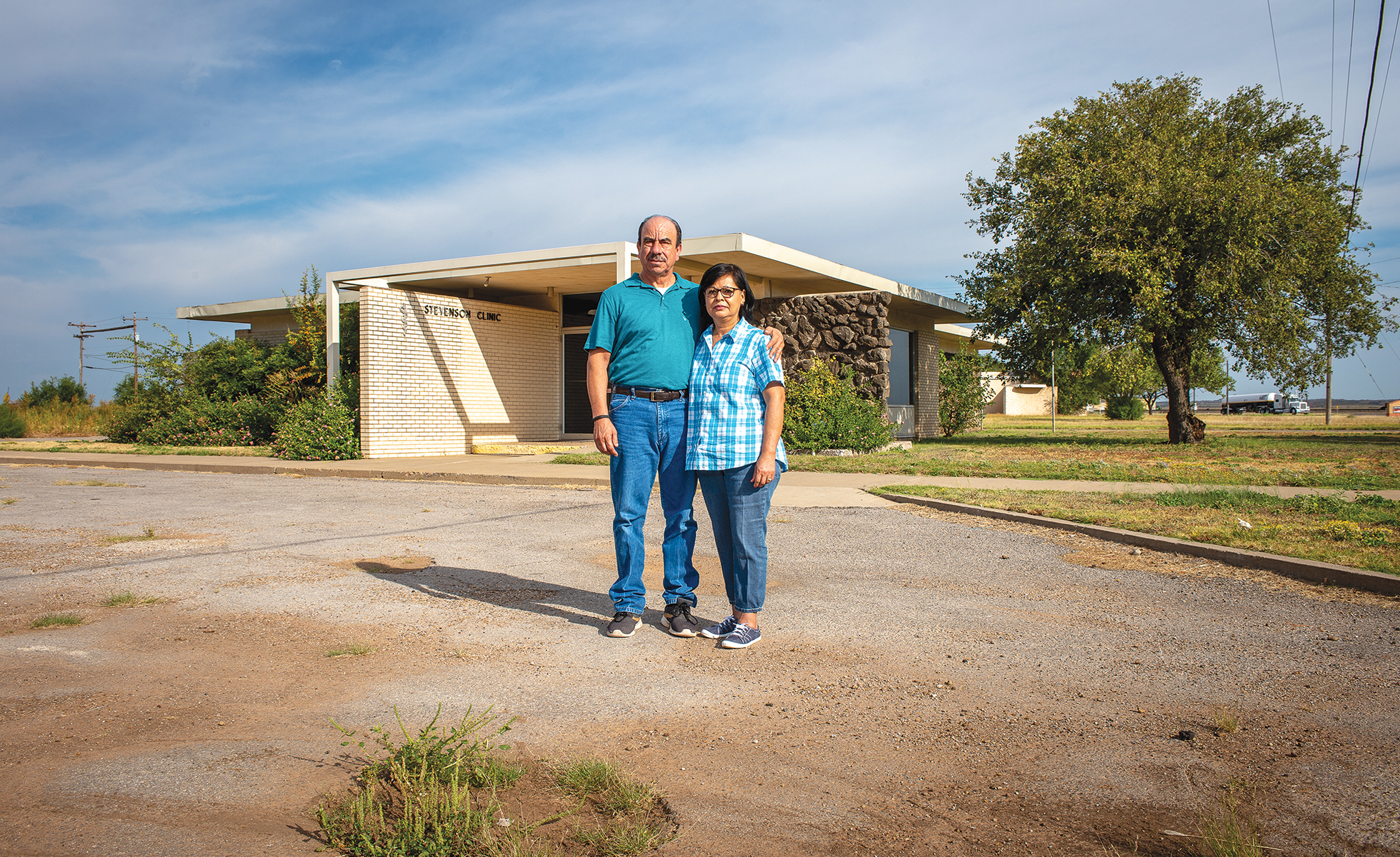
Yolanda Narvaez knew something was very wrong when she heard the crackling in her neck—“Like when you put milk in Rice Krispies.”
Yolanda was working the cotton fields just outside Memphis, a small town in the Texas Panhandle, when it happened. It was 2001, and her job was to navigate the claustrophobic paths between rows of cotton, checking traps for boll weevils—beetles that feed on the plants and are one of the state’s most destructive agricultural pests. Rain had poured down the night before, making a mess of the fields. Driving a pickup and looking sideways out the window for weevils, Yolanda didn’t see that the path in front of her had been washed out. The truck’s front end plunged, lifting Yolanda in the driver’s seat and whipping her head toward the roof.
Yolanda later learned that she had ruptured three discs in her neck, setting off a cascade of medical problems and years of chronic pain that would upend her and her family’s lives. Now, nearly 20 years later, there’s not much she can do without significant pain. “Just talking about it makes me want to cry,” she says. That means no more playing backyard football with her kids and grandkids. No more gardening. No more pickup basketball. No more of a lot of things she once did with ease and joy. The 63-year-old feels depressed—and she feels pain. All the time.
“I guess it just comes from living in a small rural community—you don’t get access to too much of anything.”
Living in rural Texas only exacerbates Yolanda’s condition. There’s no doctor in all of Hall County, population 3,000, where she’s lived for decades with her husband, Angel Narvaez. There was a physician in town until recently, but he died this spring. The health clinic in Memphis shuttered two years ago, when the nurse practitioner who ran it retired. The empty clinic sits in front of the old hospital, which closed in 2002. The closest medical center is in Childress, 30 minutes away, but even there, there are no specialists who can administer the regular injections and other procedures Yolanda needs for her neck pain.
Because the injury left Yolanda unable to drive beyond town, she relies on Angel to take time off from his job doing maintenance and cleaning at the Hall County Courthouse to drive her to doctor appointments. About once every month the couple drives 300 miles to Lubbock and back, five hours round-trip, for an appointment with Yolanda’s pain specialist. Early appointments sometimes require spending the night in a motel, another expense on top of gas. Once, they drove nearly eight hours round-trip for a doctor visit in San Angelo, only to find out when they arrived that it had been canceled. These surprise cancelations happen a couple times each year, and when they do, it’s a full day wasted. Also, Yolanda’s workers’ compensation—which covers her injury and is her only health insurance—won’t reimburse for mileage of canceled appointments.
The Narvaezes are used to traversing long distances for medical care. It’s sort of a sad family tradition, one memorialized by a small teddy bear that sits on their dashboard, stitched with the name Ian, their grandson who was born with a rare, life-threatening liver disorder. For years, his condition required regular trips to see specialists in Amarillo, Dallas, even Florida. Once, when Ian was very sick, the ambulance took so long to arrive to their house that his dad drove him the 30 minutes to Childress himself, where Ian was put in a helicopter and flown to Amarillo for more advanced care. Angel and Yolanda’s daughter, Margie, a nurse, got fed up with the lack of medical care and moved the family to Bridge City, two hours east of Houston, a city with some of the best hospitals in the country. The experience also inspired the Narvaezes’ son, Nick, to become an EMT in Memphis—but the ambulance service is still severely understaffed. While the county has two emergency vehicles, there are only enough EMTs to run one at a time. If one is out taking a patient to the hospital, it could be occupied for hours, leaving the entire county without emergency transport.
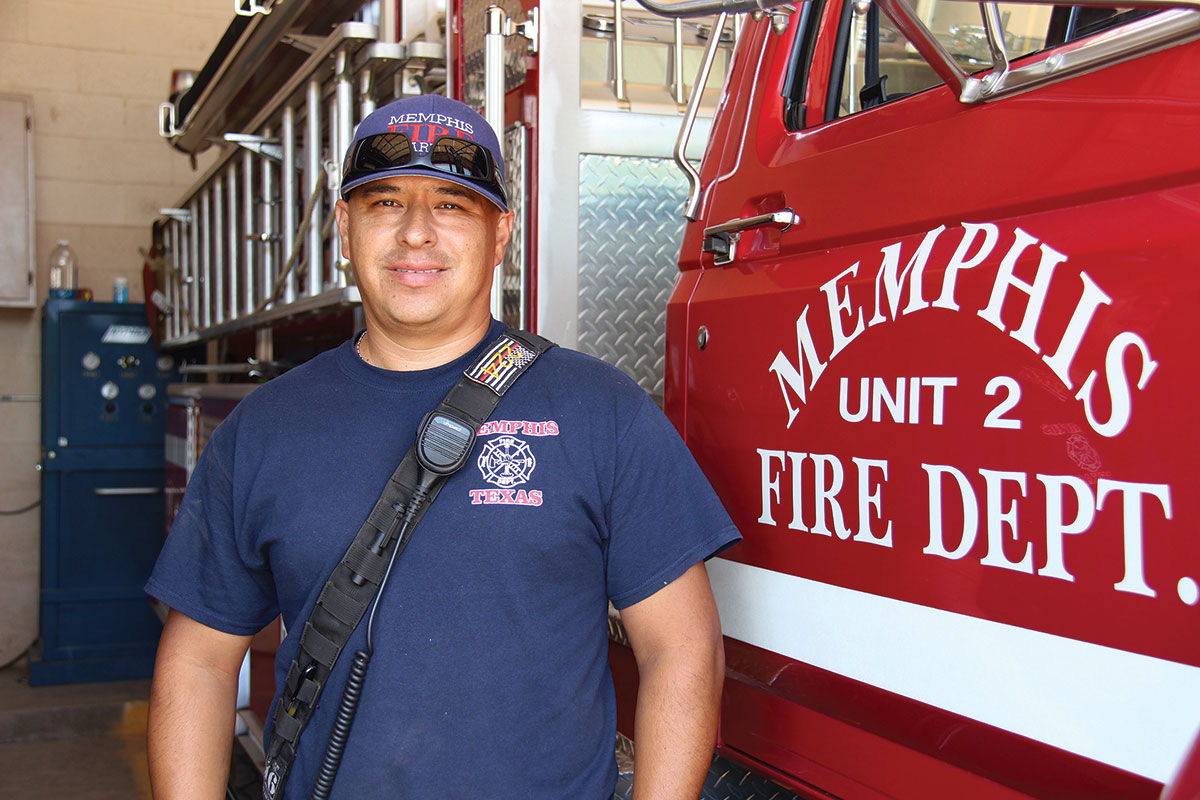
“It’s just the way it’s always been,” Yolanda said. “We don’t have enough help.”
Neither does a lot of rural Texas, which is facing a critical physician shortage. Two decades ago, 14 of the state’s 254 counties had no doctor. Today, that number has jumped to 33. More than 20 other counties have just one. In 2018, Texas had about 54 primary care physicians per 100,000 people, according to research from the Robert Graham Center, affiliated with the American Academy of Family Physicians—one of the lowest ratios in the country and far below the national ratio of 76 per 100,000. More than a quarter of Texans live in an underserved county like Hall, with fewer than one primary care physician per 2,000 residents. For years, medical professionals have been sounding the alarm, but they say lawmakers are still not doing enough to bring services to far-flung Texas—and that the problem is only getting worse. Statewide, the primary care physician shortage is expected to grow from about 2,000 to nearly 3,400 in the next 10 years.
The Panhandle is particularly emblematic of Texas’ doctor shortage crisis. Projections show the area’s residents need roughly 140 more primary care doctors to meet demand; by 2030, they’ll need 185 more, according to the Texas Department of State Health Services. Hall County, where the Narvaezes live, sits in a cluster of eight doctorless counties. Several of these also have no nurse practitioner or other medical staff.
Rural populations also face economic barriers to accessing medical care. They tend to be poorer—or older and on a fixed income—and have higher uninsured rates than their urban counterparts. Yolanda’s brother and sister-in-law in Crosbyton, 40 minutes east of Lubbock, sometimes don’t have money for gas to get to the doctor, so they cancel their appointments and reschedule when the social security check arrives. Other Texans pay their neighbors to drive them. Many forgo care altogether.
Everything would be easier for the Narvaezes—for all of Hall County, really—if the health clinic in Memphis were still open. The nurse practitioner there couldn’t do much for Yolanda’s neck, but the clinic saved them hours on the road for basic services like flu shots and allergy treatment. But the building sits vacant; old medical reference books are still tucked away in cabinets, dust and dead bugs gathering in corners. County officials have been trying to find a nurse or doctor to reopen the clinic. When anyone comes to tour, Angel cleans the facility, part of his second job running a cleaning service in town to make ends meet. Yolanda helps as much as she can manage. But the couple tries not to get their hopes up.
“I guess it just comes from living in a small rural community—you don’t get access to too much of anything,” Yolanda says during a recent trip to Lubbock, as she watches cotton fields blur by. “It’s hard living in a small town. But at our age, I don’t know that we’d make it anywhere else.”
In February 1989, a nine-member task force handed over a 140-page report on rural health care to then-Governor Bill Clements. The task force crisscrossed the state for 10 months, taking in 100 hours of public meetings, before reaching a determination: The health care system for rural Texans was utterly broken. Rural hospitals faced a wave of closures. Small-town doctors were retiring or dying with no one to replace them. In some rural areas, health care was all but disappearing. The task force excoriated public officials for letting things get so bad.
“More and more of our fellow Texans are traveling further and further for even the most basic health care services, or worse, simply doing without,” the task force wrote. “If this sorry state of affairs were brought before a grand jury, there might be an inclination to indict the state and federal governments of gross negligence.”
The task force recommended financial incentives for doctors willing to practice in rural Texas and suggested emphasizing primary care instead of other specialties during medical training—solutions that health care advocates still espouse today. With some creative funding, the report said, Texas could “reverse disturbing trends limiting availability and access to health care in rural areas.” But 30 years later, the problems persist. Rural hospitals are still closing. Older doctors are retiring; younger doctors are staying in the cities where they were trained.
Two decades ago, 14 of the state’s 254 counties had no doctor. Today, that number has jumped to 33.
“This has been a problem for a very long time,” said Tom Banning, CEO of the Texas Academy of Family Physicians, an Austin-based trade group representing family doctors. “What we’re talking about right now is the same damn thing they were talking about in 1987.” He and scores of other health care experts generally agree on why rural counties have increasingly gone doctorless: Training spots for medical school graduates are limited in Texas; graduates leave school burdened with crippling student loan debt—sometimes up to $400,000—prompting them to select high-paying specialties in urban areas; and the state has done a miserable job of enticing physicians to set up shop in small towns.
In theory, there should be enough doctors to go around. Texas is producing more medical school graduates than ever: 1,735 in 2018 compared to 1,672 the previous year. That number is expected to grow even higher after the University of Houston and Sam Houston State University open new medical schools next year. But before those future doctors can see patients without oversight of another physician, they’ve got to attend a three-to-seven-year residency program. That’s where the bottleneck happens—Texas has plenty of medical school graduates but too few places to train them. The result is that recent graduates move to other states, like California, with more residency spots.
“We’ve been exporting medical school graduates because we don’t have adequate slots,” said Dr. Dana Sprute, director of the family medicine residency program at Dell Medical School. In 2018, the state had an estimated shortage of 200 residency slots.
Sprute says it’s imperative that the state increase the number of residency slots, especially since the doctors who train here tend to stay here—in 2016, nearly 60 percent of doctors who had their residencies in Texas stayed in-state. And those who do residency work in rural Texas are also more likely to practice in a small community than those who don’t, experts say.
Residency programs in Texas are mostly funded through an annual $10 billion Medicare appropriation distributed nationally that has barely budged in two decades. The state doesn’t supplement much beyond the federal dollars, and in fact, the current doctor shortage crisis can partially be traced to a particularly austere legislative session in 2011. That year, lawmakers slashed the budget for training family medicine doctors by 72 percent. At the time the cuts were made, Dr. Bruce Malone, former president of the Texas Medical Association, warned that defunding today would exacerbate doctor shortages tomorrow. “There is a long queue for that training, so if you cut the people at the beginning of the training process, there’s no way you can make them up quickly,” he told the Texas Tribune that August. In the years since, some residency programs have been forced to cut services and accept fewer applicants. Last year, the 40-year-old family medicine training program in Wichita Falls was shuttered for lack of funds.
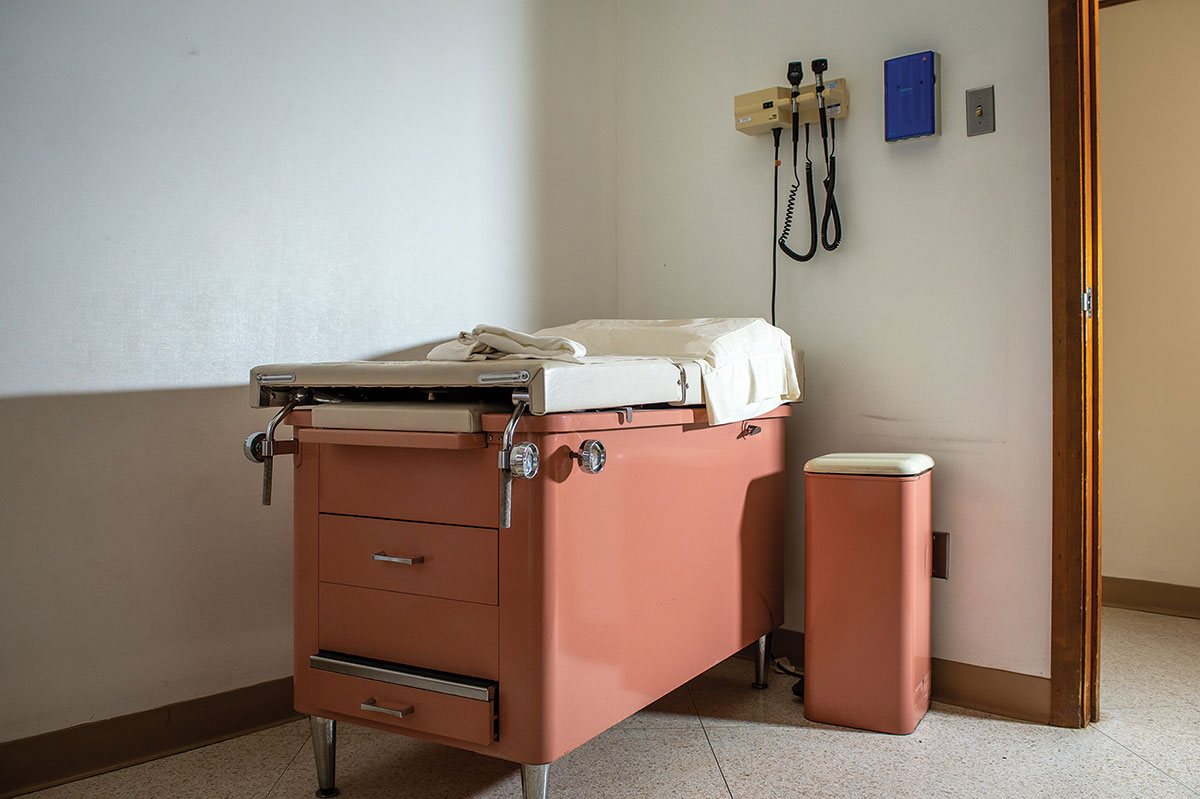
But even with sufficient residencies, medical school graduates are still typically saddled with hundreds of thousands of dollars of debt. State officials set up the Physician Education Loan Repayment Program, which promises doctors up to $160,000 in loan repayment if they agree to work in an underserved area, but that program has been haphazardly funded by lawmakers. Loan repayment appropriations have tumbled by 25 percent, from a peak of $33.8 million in the 2016 to 2017 biennium to $25.4 million in 2018 and 2019.
In 2019, only 27 percent of Texas doctors receiving loan assistance through the program went to rural areas, compared to 52 percent in 2014. Lawmakers further watered down the program by adding an “alternative pathway” that cuts the requirement for doctors to work in underserved areas in order to be awarded funds. The trend really doesn’t seem to fit with the intent of the program, says former state Representative Warren Chisum, who helped secure the program’s first major funding source in the 2009 session.
The Legislature has also damaged other, smaller initiatives to get doctors into rural areas, like already meager stipends for family medicine trainees who do rotations in rural settings. In 2010, state funding provided a total of $180,000 for this purpose; this year, money for the program dropped to $105,000, effectively halving the trainee class size.
“What we’re talking about right now is the same damn thing they were talking about in 1987.”
“Every biennium, you’re just sitting on pins and needles. They can zero out funding for those programs just like that,” said Dr. Frederick Onger, who directs the family medicine residency program at Texas Tech’s Lubbock campus. “So you fend for yourself or just perish.”
Physician shortages extend beyond the state’s borders. According to the National Rural Health Association, rural U.S. communities have just 40 primary care doctors per 100,000 people, compared to 53 per 100,000 in urban areas. A national survey conducted by health care advocates and NPR this year found that more than one in four rural Americans have not gotten care when they needed it in recent years. The gap is expected to get worse: Data from the Association of American Medical Colleges projects a shortage of as many as 55,000 primary care physicians and 65,000 specialists nationwide in the next decade or so. The U.S. Senate is exploring a bill to expand residency slots nationwide—a strategy that could trickle doctors down to rural areas—but Texas senators John Cornyn and Ted Cruz have not signed on as cosponsors.
At the state level, lawmakers made small steps in addressing rural doctor shortages in the 2019 session. A bill authored by state Senator Charles Perry, a Lubbock Republican with a large rural constituency, will help rural hospitals recoup Medicaid underpayments. As it stands, the insurance program only pays a fraction of what hospital services cost. Another measure, by state Representative Trent Ashby, a Republican from Lufkin, encourages more doctors to train in rural Texas. The new law grants money to universities that are creating residency spots in “rural and nonmetropolitan” areas of the state. Last year, the University of North Texas partnered with a hospital group to create 500 new residency slots. The university also now sends four premedical students to shadow physicians in Midland. According to the Texas Medical Association, three out of four residents who train in rural areas end up practicing there. On a large scale, such initiatives could go a long way toward solving the state’s doctor shortage.
On an August afternoon in Memphis, Hall County Judge Ray Powell sits behind a sturdy desk piled with an array of paperwork. Instead of his name, the placard on his desk reads “I’m Busy.”
“I’ve got more stuff than I can say grace over,” Powell said. He and Pauline Johnsey, who until this fall ran the Hall County Hospital District—a government entity that levies taxes to pay for health services like indigent care and the local ambulance—have been trying to recruit a physician assistant or nurse practitioner to take over the town’s idled clinic. No dice, at least so far.
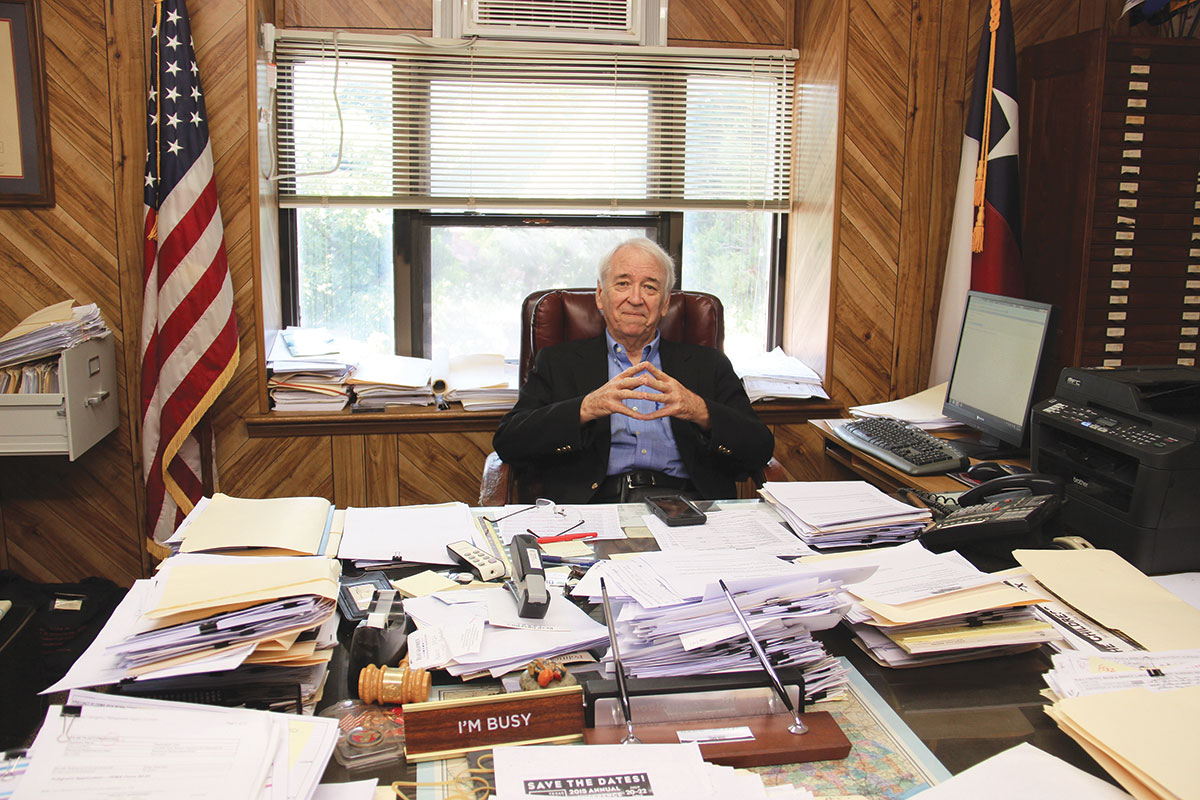
For Powell, who also happens to be Angel Narvaez’s boss, bringing some sort of health care back to Memphis is a personal mission. Powell’s wife, Lera Kate, was diagnosed with lung cancer in January 2018. For a year and a half, they drove three hours round trip to Amarillo every three weeks for bloodwork and chemotherapy. When she started seeing a radiologist, they made the drive every day for a week. “We put a lot of miles on the car,” Powell said. Fortunately, their trips have come to an end—as of this August, she’s cancer-free.
Powell worked on recruitment with Carole Ward, the nurse practitioner who ran the clinic from 2005 to 2017, administering basic care to an average of 15 patients a day. She retired at 64 to spend more time with family. But when Ward, Powell, and Johnsey tried to locate a successor to take over the clinic, the pickings were slim. The few people who expressed interest in running the place backed out after looking at the grim balance sheet. “People want to make money,” Ward said. County officials have been talking to a nurse practitioner who may want to take over, but they haven’t reached an agreement. In the meantime, the empty clinic is actually costing the cash-strapped county money. Over the last couple years, Johnsey estimates the hospital district has paid a few hundred dollars each month for gas, electricity, cleaning, and yard work as they hold out hope that someone will want to reopen it one day.
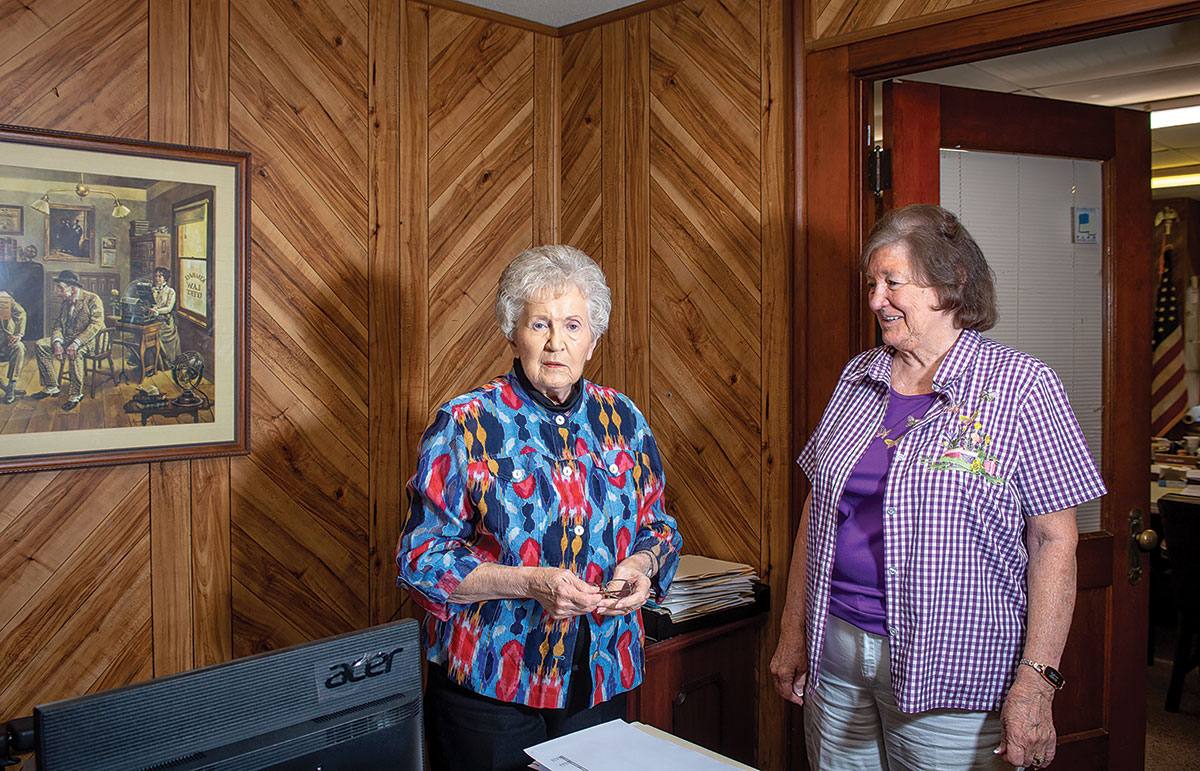
Powell is also exploring the possibility of obtaining a mobile health unit for Hall County, essentially an RV outfitted with equipment to provide basic health care services. He keeps a folder full of news clippings behind his desk—examples of other places, like Amarillo and parts of East Texas, that have started similar programs. Even if he found the funds to buy the vehicle, it would raise the same problem as the county’s empty clinic and second ambulance: Who would staff it?
The quest to bring health care back to this part of Hall County is playing out, in some form or fashion, all over rural Texas. Sixty miles south of Memphis, the dusty oil town of Paducah is going on eight months with no doctor, no clinic, no anything. About 1,100 people live in this scrubby, flat patch of the southern Panhandle, by far the biggest town in Cottle County, situated halfway between Lubbock and Wichita Falls. The people of Paducah had a health clinic here until March, but like many others in the state, it was a money-loser. The clinic now sits empty on the edge of town, in the shadow of Paducah’s hospital, which closed in 1985.
The clinic was handy for 61-year-old Irless Brooks, who lives in Paducah and has multiple sclerosis (MS). The blood thinners Brooks takes for MS require frequent blood testing, which he could do at the clinic just five blocks from his home. Now that it’s closed, he must drive 30 miles north to Childress for routine blood work and other medical services, a difficult task as MS robbed him of most of the function of his legs. He controls his pickup’s foot pedals with a mechanism mounted near the steering wheel; he drives slowly and feels unsafe in heavy traffic or near construction. Earlier this year, the daunting prospect of travel compelled Brooks to put off an appointment with a neurologist in Lubbock for six months. Still, he said, he counts himself as “one of the lucky ones.”
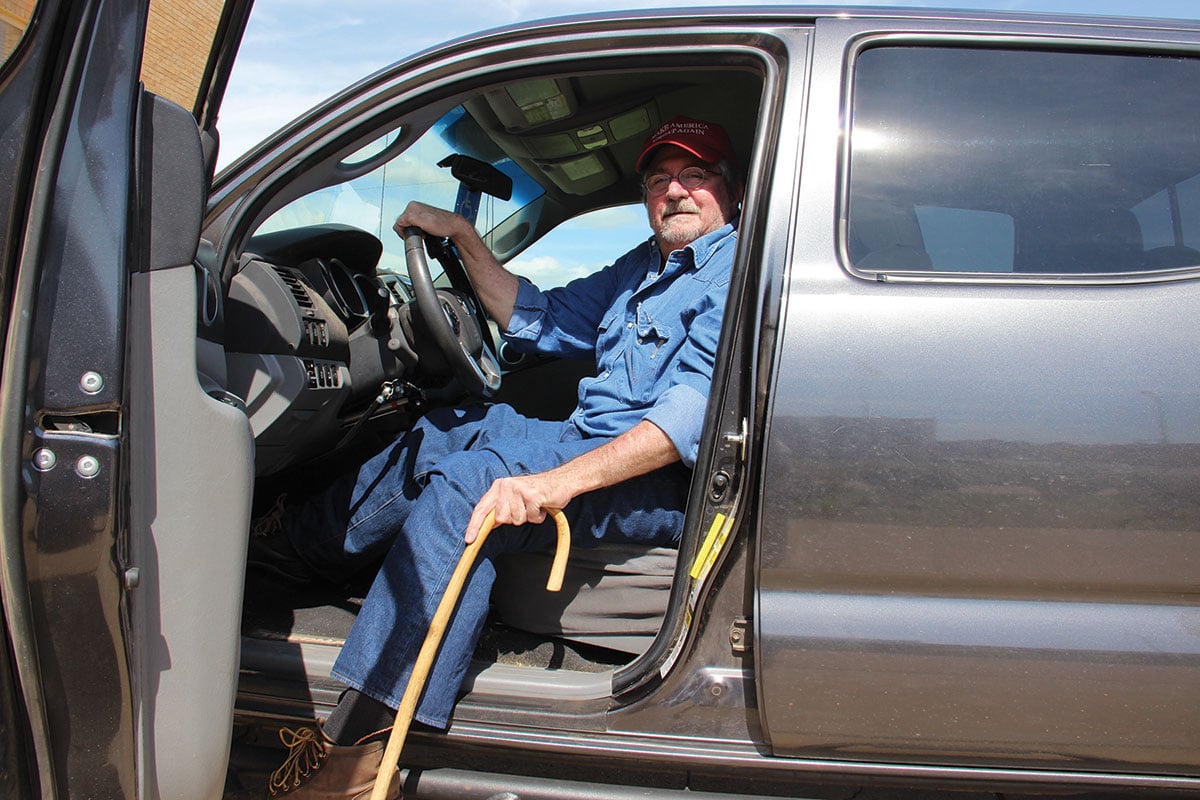
“There’s people around here who can barely pay their water bill, and a lot of them don’t even have a vehicle to go a long distance,” he said. “There’s a lot of old, sick shut-ins around here.” Unfortunately for Brooks and other Cottle County residents, there’s no indication that the clinic—or health care of any type—will be back soon. It’s hard to blame the aging, left-behind communities here or elsewhere in Texas for getting fatalistic. As one uninsured shopper at Moore’s Thriftway, the only grocery store in Paducah, advised: “Eat good, exercise, and pray.”
That the rural doctor shortage is so tied to the decline of small rural towns makes it a more complex problem. For many rural Texans, it feels like lawmakers—far, far away under the pink dome in Austin—aren’t hearing their concerns. “If you stick a pin in Amarillo and a string, and draw a radius around, do you know how many state capitals are closer to Amarillo than Austin?” said Dr. John Howard, who runs a health clinic in Donley County, directly north of Hall. “Santa Fe, Oklahoma City, I think Denver is closer, Topeka it’s awfully close, even Little Rock would not be too much further,” he said, laughing. “Austin’s a long way away.”
Howard’s clinic in Clarendon, the county seat of Donley, is the only one in at least a thousand square miles, and Howard, a retired Marine Corps flight surgeon, is the only physician in the county, population 3,300. He’s also the county judge, the emergency management coordinator, the de facto budget officer, an attorney, and a Sunday school teacher.
Twenty years ago, after graduating from Tulane University and doing medical stints in Louisiana and across Texas, Howard set about figuring out where he would practice for the long haul. He examined a map of Texas and a database from the Texas Medical Association that showed the distribution of doctors in the state’s 254 counties, looking for a place where he could make a real difference, a community in desperate need of a doctor. He landed on Clarendon, an hour southeast of Amarillo. Unlike in some nearby Panhandle towns, the highway splitting Clarendon is populated with businesses that are mostly still open: gas stations, fast food joints, and lodging with names like the It’ll Do Motel. A sign outside an auto parts supply shop informs passersby, “God loves you always has!!” Another advertises Clarendon with a town slogan: “Stay all night! Stay a little longer!”
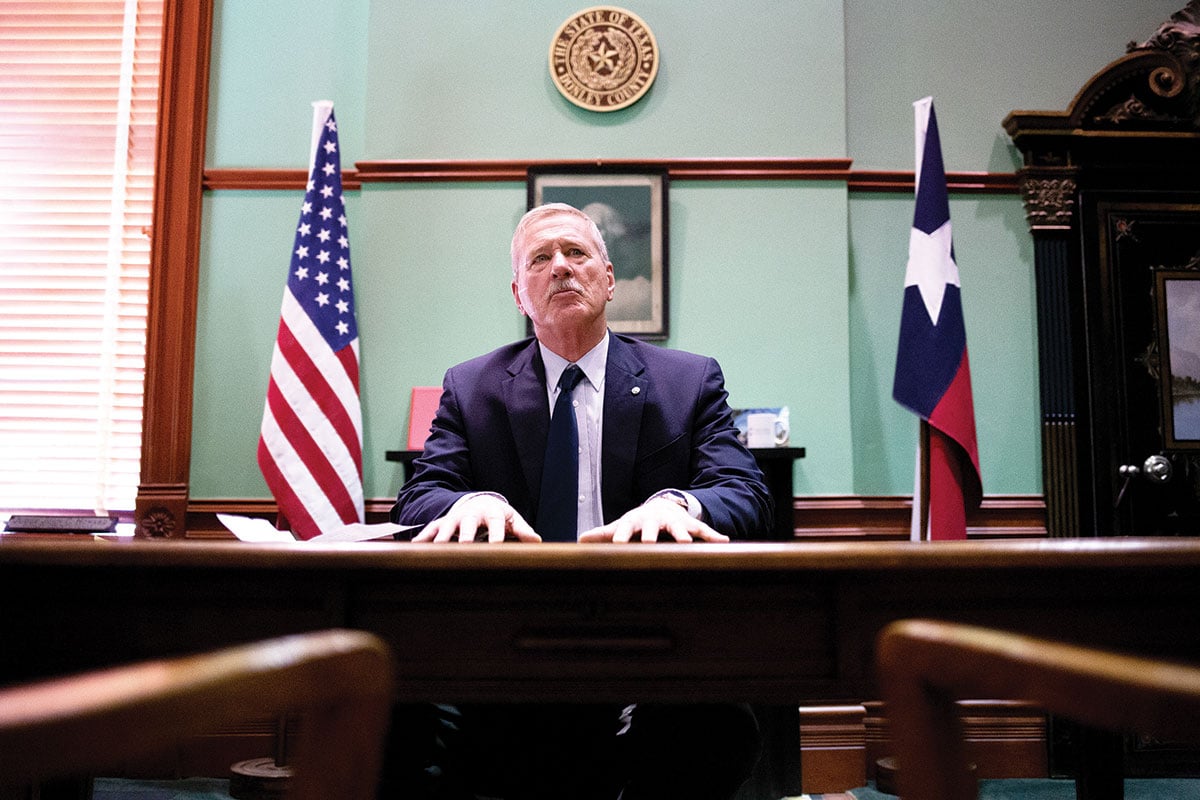
Clarendon is situated on a busy highway on the Dallas-to-Denver corridor; motorists with medical emergencies would be out of luck if Howard weren’t here. At his clinic, Clarendon Family Medical Center, Howard and a few mid-level providers try to stabilize patients before they travel the hour to hospitals in Amarillo or Childress. Now, with the Memphis clinic closed 30 minutes away, Howard sees more traffic from Hall County too. Patients’ conditions run the gamut from the flu to diabetes, farming injuries, snake bites, cancer, and heart attacks. “Because we’re the only provider in a county that doesn’t have a hospital, we’ll see just about anything,” Howard says as he walks us around the clinic, which he designed and built in 2001.
The clinic comprises nine exam rooms, an X-ray room, and a lab that can do basic testing. It’s clean and bright inside. Howard too is carefully polished; tall, with bright blue eyes and a dark suit, he looks the part of a former Navy officer. Dark wood frames the windows in his office, where books line one side of the room, and a series of medical, legal, and naval certificates hang on what Howard jokingly calls his “I love me wall.”
Just behind his clinic is the local ambulance service, which takes patients to Amarillo or Childress in an emergency. Next door is the nursing home, built decades ago to be a hospital. By the time construction was finished, the few doctors in town had retired or left, leaving the place unstaffed. It opened as the town’s nursing home instead.
“There’s people around here who can barely pay their water bill, and a lot of them don’t even have a vehicle to go a long distance.”
Across the Panhandle, rural counties have retained medical services either through handsome endowments or by individuals’ sheer force of will. In Collingsworth County, east of Hall and Donley, a private foundation has propped up the community hospital. Without Howard, Donley County would likely be in the same situation as neighboring Hall and Cottle counties.
Howard is glad he raised his family in a tight-knit community with wide open spaces. But if he wanted to make the big bucks, he would have taken his degrees in law and medicine elsewhere. He came here to make a difference, not a fortune. In Donley County, where more than 20 percent of residents under 65 are uninsured, Howard estimates that he gives away $50,000 in care each year to patients who can’t pay. “Donley County is by many measures one of the poorest counties in the state, so we have a significant population who face issues with access because of resources and because of transportation,” he says. Even with Howard practicing in their town, some are accustomed to going without care altogether.
Take Scarlet Estlack, a biology professor at Clarendon College who recently replaced Howard as leader of the Clarendon Lions Club. She was attacked by a dog while out for a run one weekend, but when she finally got her leg loose from its grasp, she didn’t go to the emergency room, which would have required a two-hour drive round-trip. Where did she go instead? “Home,” Estlack said, laughing. “I put hydrogen peroxide on it.” That Monday, when Howard’s clinic opened, she went in for a tetanus shot. It’s the general attitude around here, she says: People won’t travel far for care unless they’re basically dying.
The waiting room is full when Angel and Yolanda arrive at her doctor’s office in Lubbock just before 11 a.m. A regional hub for medical care between Dallas and Albuquerque, the practice sees patients from as far south as I-10, north to Amarillo, and from parts of New Mexico, says David Hagstrom, Yolanda’s pain specialist. Hagstrom, who wears a red button-up shirt and black cowboy boots, asks Yolanda a few routine questions about her pain. She’s been looking forward to this visit, hoping the doctor can help resolve an issue with her methadone prescription. For the last five months, she’s gone without the painkillers, making trips back and forth to the pharmacy in Childress, only to come home empty-handed after learning that workers’ comp hadn’t yet agreed to cover the medication.
Hagstrom tells a joke he heard on a recent hiking trip: “What’s a soft taco to a grizzly bear in Alaska? A backpacker in a sleeping bag.” Yolanda chuckles. Then he shares bad news: Workers’ comp won’t pay for Yolanda’s methadone prescription. Fortunately, he says, it’s only $20 to $30 per month out-of-pocket, “not too bad.”
“Well, not too bad, but when you have to go drive to Childress to get it too…” Yolanda trails off. Hagstrom shares her frustrations with workers’ comp, which makes Yolanda, who has struggled to find doctors who will accept her coverage, nervous. “If Dr. Hagstom decides he doesn’t want to take workers’ comp anymore, then I’m in deep water. Where am I going to go?” she says.
After 20 minutes, Yolanda’s visit is over. She and Angel pile back in the car to head home.
As Angel and Yolanda get older and require more frequent care, they’re grappling with a question on the minds of many in Memphis and surrounding rural towns: stay put and risk a medical emergency, or pack up and leave for a place with better health care? Their daughter has been trying to convince them to move to Bridge City, but they worry about leaving the home where they’ve spent their whole lives, about finding a new job for Angel, about earning enough money, about being a burden on their daughter.
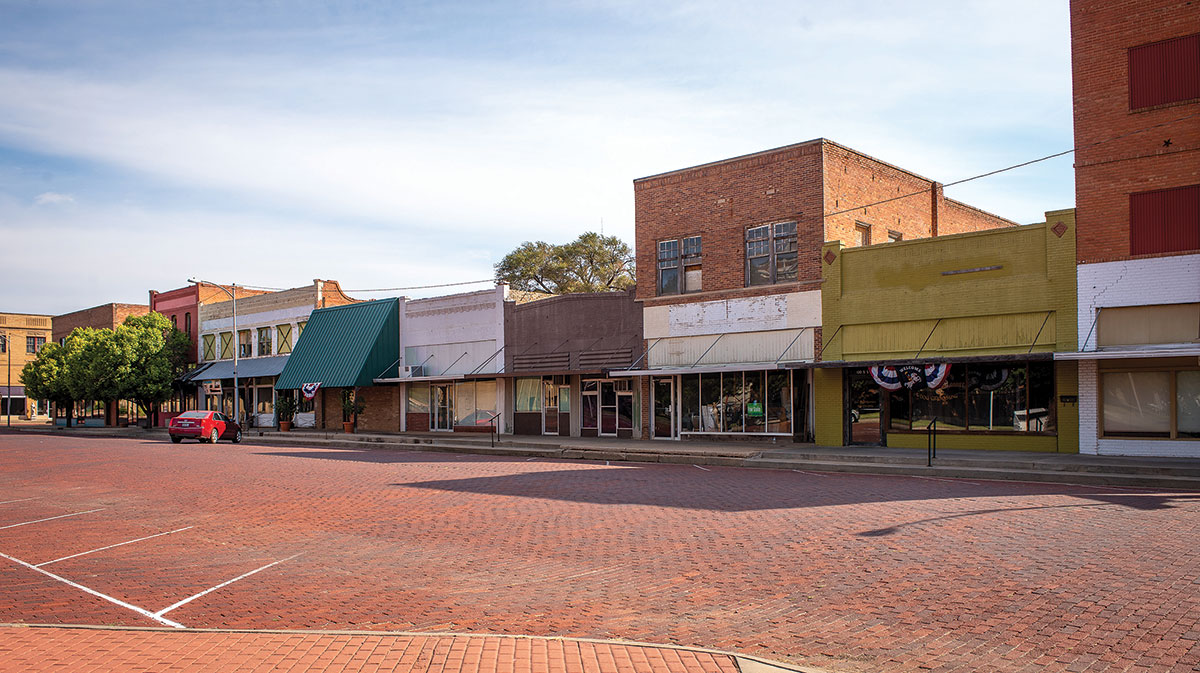
“It’s scary to move somewhere else,” Yolanda says. But “I’m tired of working so much to be able to make it here.” She adds quietly: “It’s just too much pain for me.”
On the drive home, Yolanda’s spirits lift. The long day of travel is reaching its end. The prospect of new pain medication is closer. As Angel drives, Yolanda shows us photos of their grandkids at their vow renewal two weeks before. (A sign they made for the occasion, “Oops we did it again,” now hangs in their garage.) They snack on Mexican pastries from the panadería that’s become a regular stop on their Lubbock visits. When we pass a parked motorcycle with a “for sale” sign, Angel jokes they should get it, to save gas money on trips to the doctor. They discuss plans to clean the empty clinic again that week—to sweep up the dust and insects, mop the floors, yank the weeds—in case someone else might be interested in bringing health care back to their small town.
As we near Memphis, the couple gets quieter. It’s been nearly eight hours since Angel and Yolanda set off for Lubbock that morning. Yolanda watches the familiar landscape pass: the cotton fields, the abandoned farm houses, the highway that seems to stretch forever. Angel softly drums his fingers on the steering wheel as a classic rock tune plays on the radio: I’m drivin’ my life away, lookin’ for a better way for me / Ooh, I’m drivin’ my life away …
This story is part of “Critical Condition,” a series investigating Texas’ rural health care crisis. Read Part 1 here.

